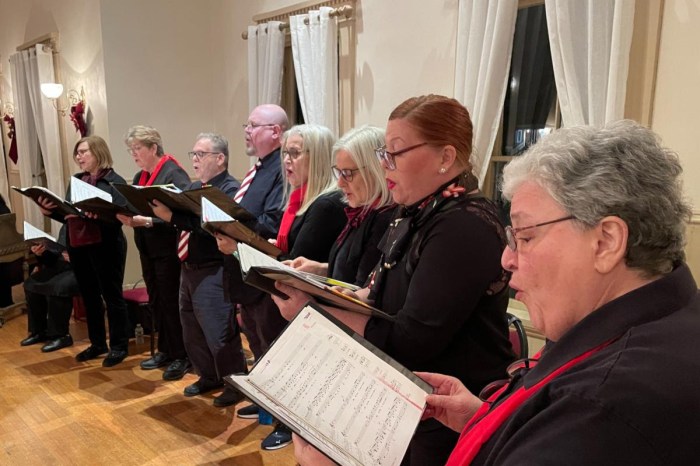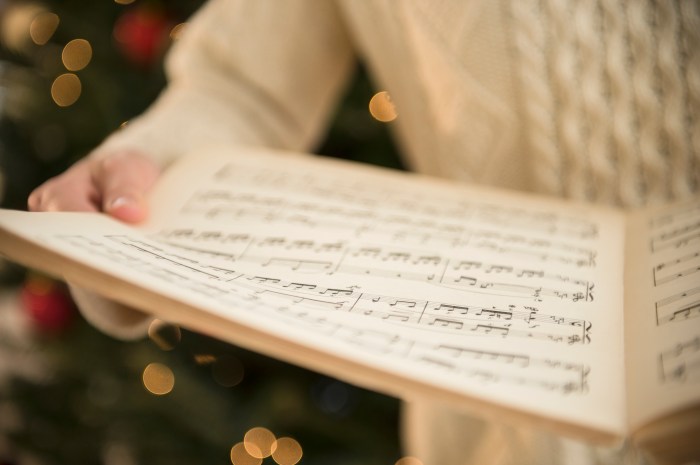By Tammy Scileppi
We always tell our audiences: “Welcome to Flushing Town Hall — you’re in The Jazz Capital of Queens,” says Clyde Bullard, producer of the Jazz Live! Series and other concerts presented there.
As the pre-eminent venue in Queens showcasing world-class artists at an affordable price, the New York City historical landmark on Northern Boulevard celebrates its 150th anniversary this year.
It’s hard to believe that the historic building, built in 1862 during the Civil War, has transformed into a renowned multi-arts center, whose performances have been reviewed by major newspapers and media outlets. Its jazz concerts won Village Voice’s Best Jazz Tour in New York City.
Not bad for a former multi-purpose building with humble beginnings. When it first opened its doors in 1864, the hall had little identity and functioned as a municipal office building, a library, the Queens County Savings Bank, and a lecture and concert hall presenting light operas.
Following Flushing’s incorporation into the City of New York in 1898, the Romanesque Revival-style building served as a courthouse from 1902 to the 1960s.
In December 1909, Flushing Courthouse made headlines throughout Gotham, as a scorned husband, Captain Peter Hains Jr., and his brother, Thornton Jenkins Hains, a successful novelist were tried there for one of the most heinous murders in New York City history. Rumor had it that Peter’s lovely young bride was taking part in orgies with her husband’s friend, William Annis.
On Aug. 15, 1908 the idyllic coast of Little Neck Bay became a horrific crime scene when Peter Hains shot the unsuspecting lover eight times to settle the score, while his brother stood guard. The two then calmly waited for the police.
Jurors convicted Captain Hains despite his lawyer’s outrageous “Dementia Americana” claim, based on “the unwritten law” — apparently, this madness overtook American husbands just long enough for them to take revenge upon their wives’ lovers. Thornton was acquitted.
The founder
From those rough-and-tumble days as a courthouse to the arts institution of today, it is Jo-Ann Jones who will always be remembered as the feisty go-getter who made Flushing Town Hall flourish. In a sense, she put Flushing on the map, not only in Queens but in the city at-large, and changed residents’ and artists’ lives for the better.
Following a series of events that changed Flushing Town Hall’s destiny, the building was starting to find itself — with a lot of help from its friends, namely Ms. Jones. From its former neglected, ugly duckling state, it blossomed into a beautifully appointed modern swan, with a much-needed $8 million face-lift.
In 1993, the first floor galleries were opened and the restoration continued until 1999, when the second floor’s 308-seat concert hall was opened to the public. Since 1993, world-class quality programs, including jazz, classical and international music, have been enjoyed by thousands who chose to stay local and avoid the trek to Manhattan and its pricey entertainment.
The building got a new lease on life when Jones, a classically trained musician, served as executive director of the Flushing Council on Culture and Arts from 1979 to 2003. FCCA restored and now operates the institution on behalf of the City of New York, the property owner.
“Flushing Council on Culture and the Arts is thrilled to celebrate Flushing Town Hall’s 150th Anniversary,” said Gabrielle M. Hamilton, director of Education and Public Programs. “With our long history — from our roots in welcoming back Queens’ Civil War veterans, to presenting the abolitionist Frederick Douglas, to seating Queens County Savings Bank and the Flushing Library here, and more recently showcasing Queens’ jazz artists — Flushing Town Hall has been instrumental in commemorating the culture, art and lives of Queens residents, as well as the general population.”
An outdoor garden can host up to 250 guests for musical performances and community events, and it’s a great venue for multicultural weddings.
The talent
Producer Clyde Bullard, a native of Harlem and Bronx resident, has been the force behind organizing the memorable music performances at the hall. Bullard is a professional bass player with the Boys Choir of Harlem, and has played the White House four or five times, including President Bill Clinton’s inauguration. He has performed in Broadway shows like “Hair” and “Pippin,” and with stars like Gloria Gaynor. Bullard said he is proud of the fact that National Endowment for the Arts Jazz Masters perform at Flushing Town Hall. He insists its mature, sophisticated audiences won’t settle for less than “artists with stature and experience that play well. The audience can’t be fooled.
“The artists are the same artists you’ll see at Carnegie Hall, Lincoln Center and even Europe,” he said.
“Audiences know when they pay money to go their concert is going to be a professional show in whatever musical genre is performing: Professional theater, lighting and sound; and a 9-foot Steinway grand piano. We try to maintain a level of excellence.”
The spirit of Louis Armstrong
Who can forget jazz legends like Jimmy Heath, Bucky Pizarelli, Max Roach and others? Starting with Flushing Council’s Jazz Live! series, thousands of lives have been enriched as the Hall continues to honor jazz in the borough by showcasing the popular Queens Jazz Trail, a journey to the homes and neighborhoods of iconic music legends like Louis Armstrong, Dizzie Gillepsie, Ella Fitzgerald, John Coltrane, Billie Holiday and Charlie Mingus. Armstrong — the father of jazz — lived in nearby Corona. Some say his spirit still dwells in Flushing Town Hall.
If you go, don’t forget the 17-piece Queens Jazz Orchestra, which has been entertaining audiences with a symphony of cool, relaxing jazz sounds.
In 1996, Flushing Town Hall took its proud place as one of 34 highly valued institutions occupying city-owned buildings, and received city funding for general operating costs, thanks to Borough President Claire Shulman, who had convinced Mayor Rudolph Giuliani to name it to the city’s Cultural Institutions Group.
In 2003, Jo-Ann Jones passed the torch to Harvey Seifter, upon her retirement. During his reign as executive and artistic director, the council’s programming has changed dramatically since it became an affiliate organization of the esteemed Smithsonian Institution in 2004. And though Jones died in August 2005 at age 59, her legacy and mission continues to thrive.
Jazz it up
“Last year, with support from the Louis Armstrong Foundation, we launched our Jazz Jam series and free monthly jazz clinics for high school students,” said Hamilton. “These monthly jazz jams provide local area graduate studies jazz musicians, instrumental music teachers and professional jazz players with a much-needed jazz gathering in Queens — to network, learn, improvise and play with other jazz musicians.”
She added, “The response to the Jazz Jam has been tremendous, and we are thrilled to be a gathering place for great music and artists.” Jams are free for musicians and members, while non-members pay $10.
Hamilton said she looks forward to many more years of fabulous art and culture by and for Queens’ residents.
Historic Flushing Town Hall
137-35 Northern Blvd.
Flushing, NY 11354
718-463-7700 x239
www.flushingtownhall.org





































